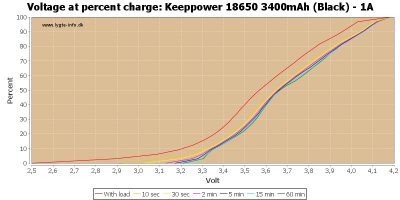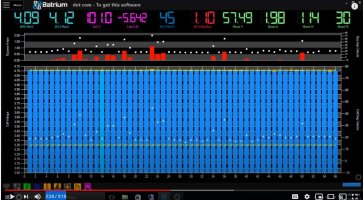OffGridInTheCity
Moderator
- Joined
- Dec 15, 2018
- Messages
- 2,713
Hi Folks
I have 2 separate healthy (no SD, balanced) 7s7p 18650 batteries in series inmy APC 3000. This mimics the original 2 seperate 1s2p 12v lead acids.
Here's a pic so you can see what I'm talking about - each one minics the standard 24v APC RBC7 lead acid battery that would normally go in an APC with about same ah.

This setup has been running for over 2 years and yet the separate batteries (which are healthy)do not 'get out of sync' with each other. Note that these7s7p batteries mostly just sit all day at the 27.xV shownare only used a few secs/day when the APC smooths the ATS switch to inverter and back to grid each day. In other words, these batteries are not discharged/charged significantly - mostly just sitting at a steady SOC.
I understand a 14s BMS is needed here... that's NOT my topic.
My question: What is it about healthy batteries (18650 7s2por 12v lead acid) in series that lets them stay at a reasonable voltage day after day with respect to each other. Is it just luck or is there something about battery chemistry where 'healthy' batteries (that are not charged/discharged much) just tend to reach an equalibriam?
We see this all the time with lead acid - e.g. 4 x 12v in series = 48v but they are never balanced or worried about until 1 starts to fail.
Again, this is not about BMS, but just wondering why healthy, rechargeablebatteries in series tend to be stable
------------------
P.S. This is the APC where I recently blew up 2 x Charger 16Ts... so BMS efforts have cost me $300 for nothing so far. I'm considering my next move, but meanwhile I've gone back the original pre-Chargery situation with BattGo's as cheap/inadequate BMS.
I have 2 separate healthy (no SD, balanced) 7s7p 18650 batteries in series inmy APC 3000. This mimics the original 2 seperate 1s2p 12v lead acids.
Here's a pic so you can see what I'm talking about - each one minics the standard 24v APC RBC7 lead acid battery that would normally go in an APC with about same ah.

This setup has been running for over 2 years and yet the separate batteries (which are healthy)do not 'get out of sync' with each other. Note that these7s7p batteries mostly just sit all day at the 27.xV shownare only used a few secs/day when the APC smooths the ATS switch to inverter and back to grid each day. In other words, these batteries are not discharged/charged significantly - mostly just sitting at a steady SOC.
I understand a 14s BMS is needed here... that's NOT my topic.
My question: What is it about healthy batteries (18650 7s2por 12v lead acid) in series that lets them stay at a reasonable voltage day after day with respect to each other. Is it just luck or is there something about battery chemistry where 'healthy' batteries (that are not charged/discharged much) just tend to reach an equalibriam?
We see this all the time with lead acid - e.g. 4 x 12v in series = 48v but they are never balanced or worried about until 1 starts to fail.
Again, this is not about BMS, but just wondering why healthy, rechargeablebatteries in series tend to be stable
------------------
P.S. This is the APC where I recently blew up 2 x Charger 16Ts... so BMS efforts have cost me $300 for nothing so far. I'm considering my next move, but meanwhile I've gone back the original pre-Chargery situation with BattGo's as cheap/inadequate BMS.







